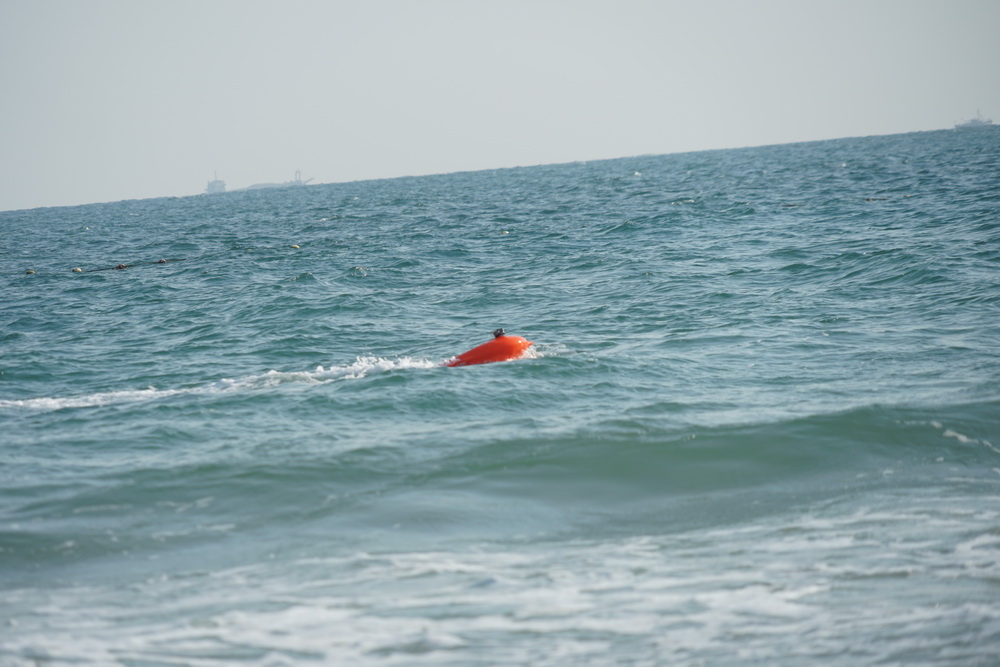With continuous technological advancements, water rescue operations are gradually shifting from traditional manual methods to intelligent and unmanned systems. In recent years, the collaborative application of "surface rescue robots" and drones has demonstrated remarkable effectiveness in multiple aquatic rescue incidents, becoming a crucial means of enhancing emergency response efficiency and ensuring rescuer safety. This article will analyze real-world cases to explore how "surface rescue robots" and drones achieve "joint operations" and discuss future development trends.

Surface Rescue Robot and Drone: Building a New Intelligent Rescue System
In modern water rescue operations, time is life. Traditional rescue methods are often limited by distance, water currents, and weather conditions, leading to delays during the critical golden rescue period. The "surface rescue robot," as a remotely controlled, highly maneuverable smart device, can quickly reach drowning victims in complex waters and provide stable buoyancy support. Meanwhile, drones offer broad aerial visibility and rapid response capabilities, enabling immediate detection and delivery of lifesaving equipment.
Their integration creates an efficient rescue loop of "aerial reconnaissance + surface deployment/response." Drones are responsible for search and localization; once a victim is detected, they instantly notify the ground command center and guide the "surface rescue robot" to the rescue zone, significantly improving search accuracy and speed.
Surface Rescue Robot Real-World Case: Joint Drill at Qiandao Lake, Zhejiang
In the summer of 2024, the Zhejiang Provincial Emergency Management Department collaborated with several technology companies to conduct a large-scale intelligent water rescue drill at Qiandao Lake. The drill simulated a tourist accidentally falling into the water at night under extremely low visibility, making it difficult for traditional boats to locate the victim quickly.
During the operation, a drone equipped with a thermal imaging camera rapidly took flight and within three minutes located the victim, transmitting real-time video back to the command center. At the same time, a standby "surface rescue robot" automatically activated based on coordinates provided by the drone and swiftly navigated toward the target along the optimal route.
Just six minutes later, the "surface rescue robot" reached the victim. Its U-shaped design made it easy for the person to grab and climb aboard. After remote confirmation of the situation by rescuers, the victim was safely towed back to shore. The entire process required no rescuer to enter the water, greatly reducing the risk of secondary accidents.
Surface Rescue Robot Advantage Analysis: Precision, Efficiency, and Safety
This "joint operation" fully demonstrated the multiple advantages of the "surface rescue robot":
- Fast Response: Compared to traditional vessels, robots can be rapidly deployed from shore or rescue boats;
- High Maneuverability: Capable of stable operation in hazardous environments such as strong currents, undercurrents, and polluted waters;
- Remote Control: Rescuers can operate from safe zones, avoiding personal risk;
- Strong Compatibility: Seamlessly integrates with drones, BeiDou positioning, and AI recognition systems to form an intelligent rescue network.
Additionally, the "surface rescue robot" features smart functions such as automatic return-to-base, low-battery alerts, waterproofing, and corrosion resistance, adapting well to various complex aquatic environments.

 .
.

Future Outlook for Surface Rescue Robots: Intelligence and Swarm Development
In the future, "surface rescue robots" will advance toward higher levels of autonomy. By integrating AI algorithms, these robots could achieve autonomous obstacle avoidance, path planning, and drowning behavior recognition. Furthermore, coordinated teams composed of multiple "surface rescue robots" and drones may enable swarm-based collaborative operations, covering larger water areas.
Government agencies, scenic areas, and maritime departments have begun bulk procurement of such equipment, promoting the establishment of integrated air-water-shore intelligent emergency systems. The "surface rescue robot" is evolving from a mere auxiliary tool into a core component of modern water rescue.
Conclusion:
The "joint operation" model of "surface rescue robots" and drones marks the official entry of water rescue into the era of intelligence. This efficient, safe, and precise rescue method not only saves countless lives but also offers a Chinese solution to global water safety management.




















 Current Position:
Current Position:












